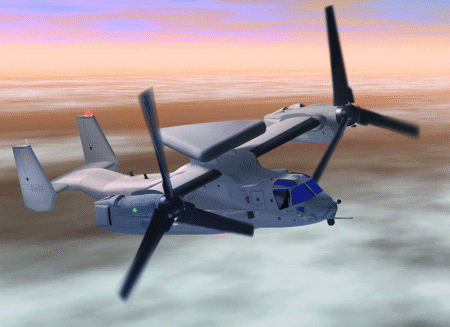Paul Lewis/WASHINGTON DC Stewart Penney/LONDON
BAE Systems and Thales Defence have received study contracts from the UK Defence Procurement Agency (DPA) for the aircraft carrier based Future Organic Airborne Early Warning (FOAEW) system. BAE has teamed up with Northrop Grumman to perform the study.
DPA and industry sources say the studies will concentrate on the costs and risks of integrating three different mission and radar systems with fixed-wing, rotary wing and tiltrotor platforms. Baseline system is the EH Industries Merlin fitted with the Thales mission system and radar from the Westland Sea King AEW7. The two others are progressively more capable. Both have platforms regarded as generic, but the Northrop Grumman E-2C Hawkeye and Bell Boeing V-22 Osprey are the only available fixed-wing and tiltrotor options.
Industry acknowledges the Merlin is the lowest risk solution as the helicopter and mission system will be in Royal Navy service at FOAEW's 2012 in-service date. But Royal Navy sources say the combination does not meet the requirement. The FOAEW will be a key element of the CVF future carrier and will support the UK's Joint Strike Fighters. The JSF choice - the CV carrier version or the short take-off and vertical landing variant - will affect the selection of the FOAEW platform.
A further request for information, probably seeking life cycle cost data, will be released in July/August, says an industry official, adding that responses will be required in January next year.
V-22 proponents note that the tiltrotor is faster and operates higher than a helicopter, although it is not pressurised, while unlike a fixed-wing aircraft it does not require a catapult or arrestor gear for carrier operations.

Bell Boeing has conducted windtunnel tests on a number of V-22 AEW configurations including a fixed tridome housing for an electronically scanned array mounted above the wing. This, however, raises issues of drag in forward flight and interaction with the twin proprotors when in helicopter mode.
Other options include fore and aft mechanically scanned arrays similar to the UK's ill-fated AEW Nimrod programme of the 1980s, an under fuselage housing, a retractable radome similar to the Sea King AEW7 but lowered from the V-22's rear ramp and a trapeze configuration using the Ericsson Erieye phased array antenna. The most efficient configuration, however, is a conformal antenna mounted along the Osprey's fuselage.
Northrop Grumman plans to propose the Hawkeye 2000, due to enter service in 2007.
Source: Flight International























